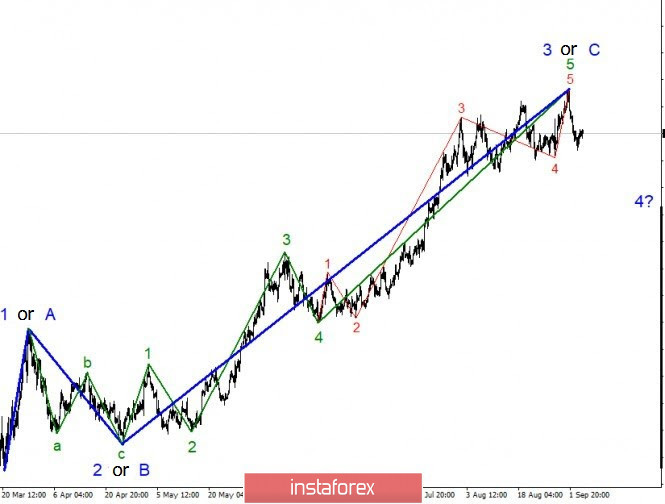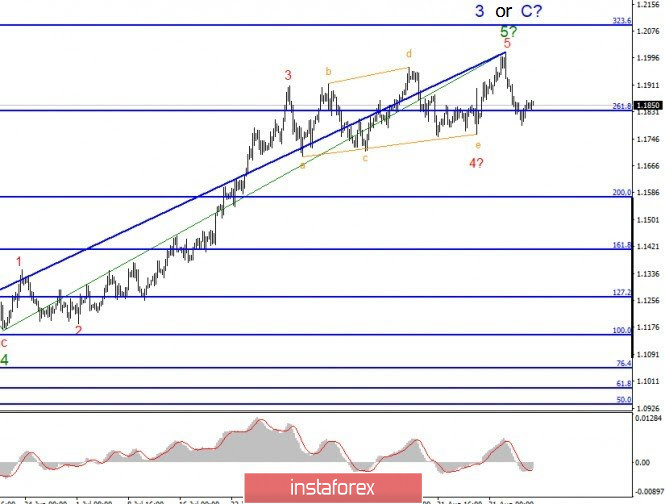
In the most global sense, the wave counting of the EUR / USD instrument has acquired a complete form. The retreat of quotes from the highs reached in recent days once again prompts the conclusion that the construction of wave 3 or C is complete. If this assumption is correct, then the decline in quotes will continue with targets located below the low of wave 4 at 5 at 3 or C as part of the construction of the assumed wave 4, after the completion of which the construction of the upward part of the trend can be resumed within the wave 5. It is also possible that the entire trend section, which originates in March, will take on a three-wave form and will be completed around 1.2011.

The wave counting on a smaller scale shows that the supposed wave 5 in 5 in 3 or C is supposed to have completed its construction. If this is true, then the decline in quotes will continue with targets located near the 200.0% Fibonacci level within a downward wave or, perhaps, even a new downtrend section.
On Friday, September 4, there were several important publications in America at once, which I have already mentioned. They will not be repeated, but in my opinion, all three American reports, namely Non-Farm's unemployment rate and average wages, showed positive dynamics. The demand for the US dollar was supposed to rise significantly that day, but instead the US currency managed to only add a little in price, and then not for long. In addition to economic statistics in the United States, at the end of last week the chief economist of the European Central Bank Philip Lane spoke regarding the current fairly high rate of the euro.
According to Lane, the current exchange rate is beginning to negatively affect the economy of the European Union. Markets say Lane hinted that the ECB may resort to foreign exchange interventions to lower the euro in the international foreign exchange market. But, as we can see, and under the influence of this information, the euro did not fall too much in price at the end of last week. So far, the downward dynamics has been preserved, but everything looks as if the instrument is within the framework of a corrective wave, after the completion of which the construction of an upward trend will resume. As for the euro exchange rate and its possible artificial decline, the ECB is unlikely to resort to such measures. Donald Trump has repeatedly accused the European Union and China of manipulating the exchange rate and may take new measures to counter the European Union. It's simple, Donald Trump himself does not need a high dollar rate. Especially now, when the size of public debt has grown by more than 4 trillion in 2020. And the public debt needs to be serviced, which is very expensive if the dollar is high.
General conclusions and recommendations:
The Euro-Dollar pair has presumably completed the construction of a global wave 3 or C. Thus, at this time, I recommend selling the instrument with targets located near the calculated level of 1.1571, which corresponds to 200.0% Fibonacci, for each MACD (Moving Average Convergence Divergence) signal down. If at this time wave 4 is really being built, then it can take a three-wave form.
 English
English 
 Русский
Русский Bahasa Indonesia
Bahasa Indonesia Bahasa Malay
Bahasa Malay ไทย
ไทย Español
Español Deutsch
Deutsch Български
Български Français
Français Tiếng Việt
Tiếng Việt 中文
中文 বাংলা
বাংলা हिन्दी
हिन्दी Čeština
Čeština Українська
Українська Română
Română

